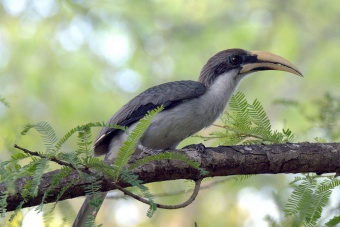
Sri Lanka Grey Hornbill/photo Georgi Kuzmanov ©
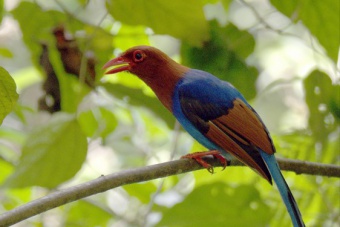
Sri Lanka Blue Magpie/photo Georgi Kuzmanov ©
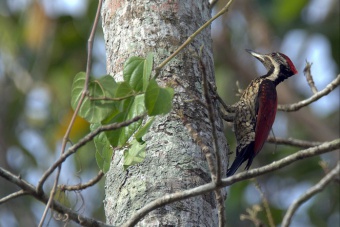
Sri Lanka Flameback photo Georgi Kuzmanov ©
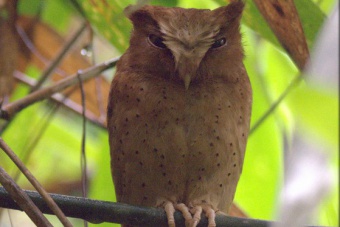
Serendib Scops Owl/photo Georgi Kuzmanov ©
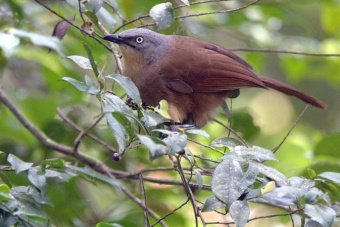
Ashy-headed Laughingthrush/photo Georgi Kuzmanov ©
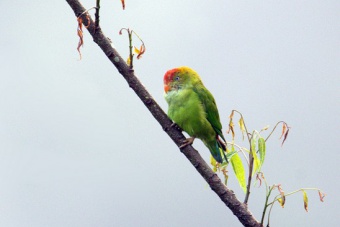
Sri Lanka Hanging Parrot/photo Georgi Kuzmanov ©
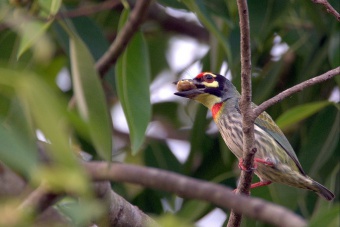
Coppersmith Barbet/photo Georgi Kuzmanov ©
Group size: 7-10 persons 1.980 EUR
4-6 persons 2.280 EUR
Deposit: 400 EUR
Single room supplement: 370 EUR
Price include: Hotel accommodation on double/twin sharing basis in standard rooms, travel by an air-conditioned vehicle with the service of a local ornithologist throughout the tour, meals with dinner and breakfast only (starts with the dinner on the Day 01 and ends with the breakfast on the Day 12), entrance fees to all sightseeing, national parks, nature reserves and jeep hire charges, one mineral water bottle per person per day;
The price does not include: International airfares, airport tax or any kind of insurance cover, bank charges when transferring the funds through bank transfers or credit card, items of personal nature like drinks, laundry, telephone calls, tips, etc., tipping and gratuities (tips are acceptable in Sri Lanka but down to personal discretion), all lunches throughout the tour, visa fees
12 days
1 April 2025 - 12 April 2025
Day by day itinerary
Day 01: Arrival - Katunayake
Arrive at Bandaranaike International Airport. You will be met and greeted by a representative from our partner and your local ornithologist. Thereafter you will be transferred to Katunayake (approximately 15 minutes’ drive). In the evening, proceed on a brief bird watching tour around the garden of the hotel. Dinner & overnight stay in Katunayake.
Day 2: Katunayake - Wilpattu
Breakfast at the hotel. Thereafter you will be transferred to Wilpattu (Approximately 03 ½ hours’ drive). En-route, explore Anawilundawa Bird Sanctuary and the Puttalam Salterns for birds. In the afternoon, explore the Wilpattu National Park which contains pure rainwater and support a vast range of resident and migratory water-birds and world renowned for its leopard population.
Wilpattu National Park
Wilpattu National Park is the largest national park and is also one of the oldest, providing a unique scenery of a complex of natural shallow sand rimmed lakes called ‘Willus’. The Willus are surrounded by grassy plains, set within thick scrub jungle. The vast, ancient forest is composed of a remarkable variety of flora and is home to a large diversity of fauna. The park boasts the highest mammalian diversity and population in the country with thirty one mammal species found in the area, including Elephant, Sloth Bear, Water Buffalo and Spotted Deer. The Muntjac Deer are more readily seen in Wilpattu than any other national park in Sri Lanka. Among the reptile species, the most common are the Mugger Crocodile, Indian Cobra, Indian Python, Star Tortoise and the Soft-shelled Turtle. The Willus of Wilpattu sustain abundant bird life with species such as Ceylon Junglefowl, Brown – capped Babbler, Ceylon Woodshrike and Black-capped Bulbul, Painted Stork, Openbill, Cormorants, Pintail, Garganey, Spoonbill and the Whistling Duck. Many birds of prey can also be seen gliding overhead, including Eagles and Kites. Butterflies species recorded in the area include the Great Egg fly, Great Orange Tip, Glad-eye Bush brown, Blue Mormon, Common Mormon, Common Rose and Crimson Rose.
Dinner & overnight stay in Wilpattu.
Day 03: Wilpattu - Habarana
Breakfast at the hotel. Thereafter you will be transferred to Habarana (Approximately 02 hours’ drive). Explore the Sigiriya Sanctuary / Habarana jungle which are designated forest reserves and are very good birding destinations. In the afternoon, take a jeep ride in Minneriya National Park which has recorded over 170 species of birds.
Sigiriya Sanctuary
Sigiriya sanctuary is a well-protected UNESCO World heritage site. This is a heavenly place for birds with thick canopies and forests. Sigiriya is surrounded with vast manmade tanks and this has made it to become a place to witness large number of migratory and endemic birds.
Minneriya National Park
24 Species of mammals have been recorded here, including Leopard, Sloth Bear, Spotted and Sambar Deer, Wild Buffalo, Wild Boar. There is also a large population of elephants in the park, which sometimes converge in great numbers around Minneriya Tank. Due to its many different types of vegetation and habitat, the park is also home to over 170 species of birds, including: migrant waders such as Wood and Common Sandpiper and Kentish Plover; forest birds like the Malabar Pied Hornbill, Rufous Woodpecker and the globally-endangered Lesser Adjutant and endemic species including Sri Lanka Grey Hornbill, Sri Lanka Green Pigeon, Brown-capped Babbler and Sri Lanka Junglefowl. The orange-breasted Green Pigeon, Emerald Dove and Green Imperial Pigeon can also be seen, as well as a host of other migrating forest birds. The dry season, from July to September, is the best time to visit the 8,890 hectare park, when the ancient tank that dominates the area dries out and the grasses and shoots push through – during this time it is possible to see herds of elephants feeding and washing. When the large numbers of elephants up to 300 come together it is an astonishing sight and is a recognized wildlife event known as ‘The Elephant Gathering’, the largest assemblage of Asian elephants in the world. Dinner & overnight stay in Habarana.
Day 04: Habarana - Kandy
Breakfast at the hotel. Thereafter you will be transferred to Kandy (Approximately 03 hours’ drive). Visit the Udawattekele Forest Reserve which is a great place to explore the bird life where approximately 80 species of birds can be seen and the Royal Botanical Garden of Peradeniya which is also a good place for birds.
Udawattekele Forest Reserve Udawattekele Forest Reserve houses to varieties of birds like Yellow-fronted Barbet, Layard’s Parakeet, Spot-bellied Eagle-Owl, Sri Lanka Hanging Parrot, Gold-fronted Leafbird, and native Three-toed Kingfisher, & Common Hill Myna, are some of them. The sanctuary is a good location for panoramic photographs of Kandy city.
Peradeniya Royal Botanical Garden
Considered Sri Lanka’s largest botanical garden, with 147 acres and over 4000 species of plants, Peradeniya Botanical Garden is a well-known attraction. The lush garden estate, also referred to as the Royal Botanical Garden is famed for its collection of 300 species of orchids. Within the delightfully landscaped greenery, visitors will come across numerous birds including species like the Yellow-fronted Barbet, Layard’s Parakeet, Alexandrine Parakeet, and Sri Lanka Hanging Parrot. Among the 10,000 or more trees found in the park, are the Giant Bamboo of Burma, the century old giant Javan Fig tree, the Cannonball tree and a range of exotic palms. Dinner & overnight stay in Kandy.
Day 05: Kandy - Kitulgala
Breakfast at the hotel. Transfer to Kitulgala (Approximately 02 ½ hours’ drive). Explore the Makandawa Forest Reserve rest of the day which is an ideal habitat to spot most of the lowland endemic species of birds.
Makandawa Forest Reserve
Makandawa Forest Reserve established as a forest reserve to protect the watershed of Kelani River. It is home to many endemic flora and fauna. The forest is secondary lowland rainforest on the lower slope with the forest extending up to the higher elevations, contiguous with the Peak Wilderness Sanctuary. Second to Sinharaja, the Kitulgala forest reserve would be the ideal rainforest habitat to spot most of the lowland species of birds. Mammal species found here include the Grizzled Giant Squirrel, Layard’s Striped Squirrel and the Purple-faced Leaf Monkey. The streams hold endemic fish and many species of amphibians. The Kangaroo Lizard and the Hump-nosed Lizard are among the reptile species and are frequently seen in this forest. Dinner & overnight stay in Kitulgala.
Day 06: Kitulgala – Nuwara Eliya
Breakfast at the hotel. Thereafter you will be transferred to Nuwara Eliya (Approximately 02 ½ hours’ drive). Explore the Victoria Park and Galway’s Land National Park which is famous for endemic birds.
Victoria Park
This city park was named after Queen Victoria in 1897 to commemorate her 60th jubilee coronation. An evening walk in this garden can catch you an encounter with the Pied Thrush, Kashmir Flycatcher, Indian Pitta and the Indian Blue Robin besides some endemics.
Galway’s Land National Park
Galway’s Land National Park is a little national stop arranged inside the city furthest reaches of Nuwara Eliya. Have been announced as an untamed life asylum on 27 May 1938. Galway’s Land harbors around 30 local species. Aside from the avifauna, the recreation center has important botanical types of both local and remote source. Galway Forest Lodge is found near the recreation center. Dinner & overnight stay in Nuwara Eliya.
Day 07: Nuwara Eliya
With packed breakfast, explore the Horton Plains National Park in the early morning which is home to 87 bird species including some endemics. In the afternoon, visit the Hakgala Botanical Garden which is believed to be the highest set botanical gardens in the world and famous for birds too.
Horton Plains National Park
Preserved for its biological, hydrological and aesthetic values, Horton Plains offers a breathtaking panorama of grassland valleys, high plateaus, mountains crests and forests. Bakers Falls and World’s End are two of this area’s not-to-be-missed viewpoints. It consists of ecosystems such as montane evergreen forests, grasslands, marshy lands and aquatic ecosystem. At an altitude of 2,100 meters above sea level, Horton Plains spreads across over 3,169 hectares of the highest tableland of the island. Horton Plains is not merely a destination for nature tourists. Since the rich biodiversity of Horton Plains is still grossly underexplored, it affords invaluable opportunities to those engaged on educational and research activities. The most frequent site of wildlife at Horton Plains is herds of Sambar Deer. Among the other mammals in the park are Strip-necked Mongoose, Grizzled Giant Squirrel, Wild Boar, the endemic Bear Monkey and Toque Monkey, Fishing cat and Otter. All of the montane endemic bird species of Sri Lanka are found in Horton Plains. Sri Lanka Bush Warbler, Sri Lanka Whistling Thrush and the Yellow-eared Bulbul, Sri Lanka Wood Pigeon, Sri Lanka White-eye, Spot-winged Thrush, Dull-blue Flycatcher and Sri Lanka Jungle-fowl are a few of them.
Hakgala Botanical Garden
The Hakgala Botanical Garden was founded in 1860 by the eminent British botanist Dr.G.H.K Thwaites who was superintendent of the more famous gardens at Peradeniya. The Dull Blue Flycatcher, a Highland bird species is probably the star of Hakgala. Through its privacy is restricted by human presence, this sparrow – sized flycatcher is abundant in the park. The Sri Lanka White- eye, a tiny sociable bird a frequent visitor to the flowers at the garden. Dinner & overnight stay in Nuwara Eliya.
Day 08: Nuwara Eliya – Udawalawe
Breakfast at the hotel. Thereafter you will be transferred to Udawalawe (Approximately 04 hours’ drive). In the afternoon, proceed on a jeep safari ride in the Udawalawe National Park which is the third most visited park in the country and one of the best habitats of water birds.
Udawalawe National Park
Udawalawe National Park was first established as a sanctuary for wild animals that had been displaced during the construction of the Udawalawe reservoir on the Walawe River. Nowadays it is the third most visited park in the country and is a home to one of the best habitats for wild elephants and water birds. There are about 400 elephants in total; this the largest known population in a specific area designated as a national park in Sri Lanka. The fauna of Udawalawe is comprised of a wide selection of species. Endemic bird species found in the park include the Ceylon Jungle Fowl, Ceylon Spurfowl, Ceylon Grey Hornbill, Ceylon Woodshrike and Ceylon Swallow. In forested areas Sirkeer and Blue-faced Malkohas are also possibilities. Mammal species found here include the Toque Monkey, Hanuman Languor, Sambar and Spotted Deer, Wild Pig, Black-napped Hare and Ruddy Mongoose and Golden Jackal. Leopards prowl the thick vegetation but are rarely seen. Dinner & overnight stay in Udawalawe.
Day 09: Udawalawe – Yala
With a packed breakfast, proceed on another game drive in Udawalawe National Park. Thereafter you will be transferred to Yala (Approximately 01 ½ hours’ drive). Explore Tissamaharama wetlands and the lagoons on the way to Yala National Park in the evening which is one of the 70 Important Bird Areas in Sri Lanka.
Tissa wetlands
Possible Noteworthy species Purple Heron, Black – crowned Night Heron, Yellow Bittern, Black Bittern Cinnamon Bittern, Brahminy Kite, Pheasant – Tailed, Jacana and other common water birds, Pipits & Wagtails, Streaked & Bava Weaver.
Yala National Park
Yala National Park, situated in the south-east corner of the island, is home to the greatest variety of Sri Lanka’s wildlife. Comprised of five separate blocks covering 14,100 hectares, its varying habitats – consisting of scrub plains, jungles, rocky outcrops, forest, mangroves fresh water lakes, rivers and coastal lagoons – provide homes for many species of animals including sloth bear, herds of elephants, buffalo, monkeys, sambar, deer, crocodiles and the endangered leopard sub-species Panthera pardus kotiya. Yala receives an annual rainfall of less than 1,000 mm from the north-east monsoon from about November to January. The rest of the year remains dry with the period from July to September showing severe drought conditions. From October to April, Yala becomes home to many species of migratory birds and is a hotspot for bird watching. The first few months of the year are also good for observing leopard cubs.
Dinner & overnight stay in Yala.
Day 10: Yala – Sinharaja
With packed breakfast, explore the Bundala National Park, in the early morning which is an internationally important wintering ground, Sri Lanka’s first Ramsar Wetland for migratory water birds. Thereafter proceed to Sinharaja in the afternoon (Approximately 04 hours’ drive). Explore around the lodge for birding in the evening and periphery of Sinharaja Rain Forest.
Bundala National Park
Bundala National Park was designated as a biosphere reserve by UNESCO, also designated a RAMSAR wetland its home to many migratory water birds in Sri Lanka. The most famous visitor being the greater flamingo’s which arrives in large flocks up to a thousand birds at a time is, making a cacophony of noise with their feeding and covering the entire area of the main Bundala lagoon with a pinkish threadbare carpet, truly a sight to behold. The park contains 05 brackish water lagoons, Bundala being the best known and the best place to creep to watch elephants frolicking is the nearby tank called “Kokara”. Area is home to many plant species along with mammals, reptiles and butterflies. Dinner & overnight stay in Sinharaja.
Day 11: Sinharaja
With packed breakfast and lunch, explore the full-day in Sinharaja Rain Forest which is home to 28 endemic birds out of 34 in total of Sri Lanka and is a UNESCO World Heritage site.
Sinharaja Rain Forest
Sinharaja Forest Reserve is a national park and a biodiversity hotspot which is also of international significance and has been designated a Biosphere Reserve and World Heritage Site by UNESCO. The reserve is a treasure trove of endemic species, including trees, insects, amphibians, reptiles, birds and mammals. Because of the dense vegetation, wildlife is not as easily seen as at dry-zone national parks such as Yala. The most common larger mammal is the endemic Purple-faced Languor. An interesting phenomenon is that birds tend to move in mixed feeding flocks, invariably led by the fearless Sri Lanka Crested Drongo and the noisy Orange-billed Babbler. Of Sri Lanka's 34 endemic birds, the 28 species occur here, including the elusive Red-faced Malkoha, Green-billed Coucal and Sri Lanka Blue Magpie. Reptiles include the endemic Green Pit Viper and Hump-nosed Vipers, and there are a large variety of amphibians, especially tree frogs. Invertebrates include the endemic Common Birdwing butterfly and the inevitable Leeches.
Dinner & overnight stay in Sinharaja.
Day 12: Sinharaja - Departure
After a leisurely breakfast, you will be transferred to Bandaranaike International Airport (Approximately 03 hours’ drive) for your flight back home. You can reflect upon the numerous memories you would have no doubt acquired throughout this exciting tour.
languages
English